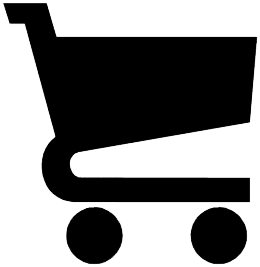Simple eCommerce Tips For Higher Conversion Rates
Posted on December 13, 2016 Mary Merritt
So you want to start selling your hand-made hacky sacks online do you? Or maybe you want to start writing and selling eBooks to your loyal community of followers? Take it from me, whether you are selling knowledge, kick bags or surf boards, your website needs to follow a couple of simple rules in order to keep customers moving through your sales funnel with ease.
Tip #1: The Importance of Guest Checkout
Guest Checkout is one of most important and meaningful changes you can make to your eCommerce website if you are trying to increase your conversion rate. Cart Abandonment rates simply skyrocket when a company forces a potential customer to create an account before completing the checkout process. Why the hell would I take the time to start yet another online account of some kind with YOU, when I can go somewhere else and checkout swiftly as a guest?
Last summer, we implemented Guest Checkout for one of our eCommerce clients and we all have experienced a marked improvement in the website's conversion rate, total revenue and average order value! This client still asks the customer if they want to start an account, but they do so AFTER the customer has already completed the entire checkout process. What a concept!
Tip #2: Brief Product Descriptions Are Awesome
The days of focused, long attention spans have been replaced by mobile technology and the overall information super highway that courses through the air. The importance of bulleted features, crisp videos and beautiful high resolution photos is paramount. All of these items will help your potential customer make an informed decision. Don't tell-sell them, just offer them some easily-digestible information! Instead of a paragraph of copy, distill it down to the most important benefits and list them as 5-7 bullet points. Instead of 3 paragraphs, offer the viewer an informational video (make the video 25-45 seconds long). Oh, and graphics are extremely hot these days; I am really loving when people use icons and infographics instead of words alone.
Tip #3: Build Out a 1-Page Checkout System
This one is pretty darn simple: Collect the customer's shipping address, billing address and payment information on the same page. There is no reason to make people go through 3 different pages for 3 different steps in the process. Just have the page anchor down automatically (using something sexy from the jQuery library) once they complete each step. To be my hero, you should have all of their information aggregated into a nice little "sticky" sidebar that follows the user up and down the page no matter where they scroll. That way, you don't even have to have them leave the page to confirm that all of their information is correct!
Tip #4: That Search Bar Better WORK...OR ELSE
Please, for the love of all things NERDY, don't have a search box on your website if you aren't going to put the time into making it work flawlessly. If you can, build out search redirects for commonly searched terms (instead of giving them a search results page, take them to the page they want to see). Most search boxes (at least from my latest manual research) seem to live in the upper right side of the website, above the main navigation. At any rate, you should strive to follow standards that can easily be researched by going to some other websites and doing a simple competitor analysis. Take some criteria and pit 5-7 websites against one another to see what patterns you find. It's seriously a good time (if you're a NERD like us).
Tip #5: Consistency Is Amazing
This tip comes straight from my years and years of eCommerce experience. I am not trying to push my OCD ways on you, I promise. Having a consistent experience is very important for users. If the product description is below the fold underneath the gallery of images, then it should be below the fold and under the gallery of images on EVERY PAGE. The "add to cart" button should not only LOOK the same, but it should be in the same place on every page. If the search bar is in the top right corner on the homepage, it should remain there throughout the experience. You get the idea. Mind you, all of these design and placement decisions should be based off of solid data and testing, but that is also another blog post for another day. Stay consistent and your users will familiarize themselves with your experience much faster.
Well, I hope you have found these quick tips enlightening! Some of them might seem like common sense, but you would be surprised how many folks aren't putting these simple items into practice. Give your website a quick audit to see what tips you can implement on your site! You might need help from some NERDS, but taking the time and spending the money to do it right is a solid investment for the future. Do you have a website project that is burning a hole in your brain? Fill out this form and we'll get back to you real quick-like.

